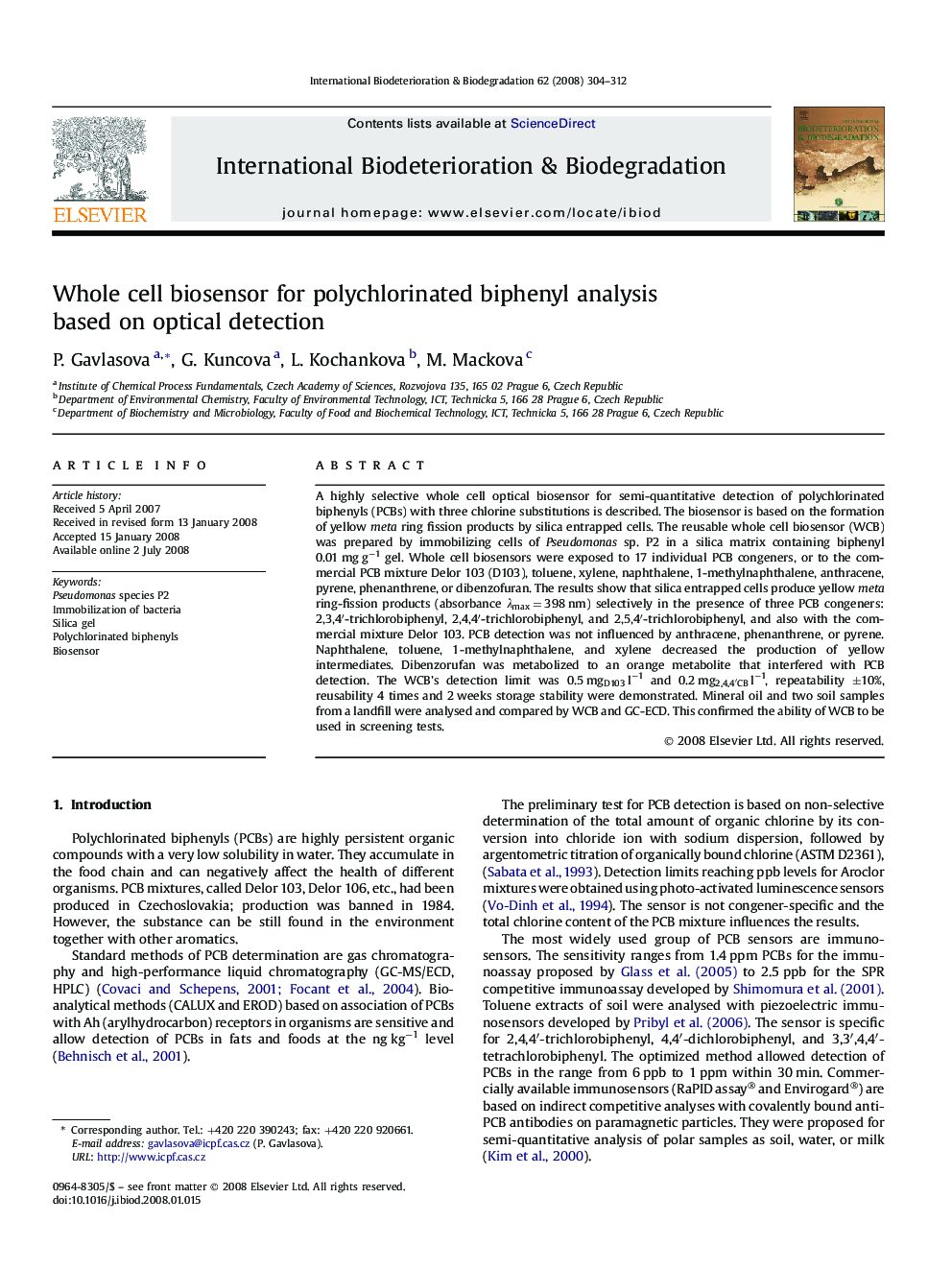| Article ID | Journal | Published Year | Pages | File Type |
|---|---|---|---|---|
| 4365696 | International Biodeterioration & Biodegradation | 2008 | 9 Pages |
A highly selective whole cell optical biosensor for semi-quantitative detection of polychlorinated biphenyls (PCBs) with three chlorine substitutions is described. The biosensor is based on the formation of yellow meta ring fission products by silica entrapped cells. The reusable whole cell biosensor (WCB) was prepared by immobilizing cells of Pseudomonas sp. P2 in a silica matrix containing biphenyl 0.01 mg g−1 gel. Whole cell biosensors were exposed to 17 individual PCB congeners, or to the commercial PCB mixture Delor 103 (D103), toluene, xylene, naphthalene, 1-methylnaphthalene, anthracene, pyrene, phenanthrene, or dibenzofuran. The results show that silica entrapped cells produce yellow meta ring-fission products (absorbance λmax = 398 nm) selectively in the presence of three PCB congeners: 2,3,4′-trichlorobiphenyl, 2,4,4′-trichlorobiphenyl, and 2,5,4′-trichlorobiphenyl, and also with the commercial mixture Delor 103. PCB detection was not influenced by anthracene, phenanthrene, or pyrene. Naphthalene, toluene, 1-methylnaphthalene, and xylene decreased the production of yellow intermediates. Dibenzorufan was metabolized to an orange metabolite that interfered with PCB detection. The WCB's detection limit was 0.5 mgD103 l−1 and 0.2 mg2,4,4′CB l−1, repeatability ±10%, reusability 4 times and 2 weeks storage stability were demonstrated. Mineral oil and two soil samples from a landfill were analysed and compared by WCB and GC-ECD. This confirmed the ability of WCB to be used in screening tests.
